Ano, běžecké lyžování je fantastické pro kardio a hubnutí. Je to jeden z nejúčinnějších tréninků celého těla, který spálí až 1 220 kalorií za hodinu a zároveň šetří vaše klouby. Navíc zlepšuje výdrž, rovnováhu a zdraví srdce.
Tady je to podstatné:
- Spalování kalorií: V závislosti na intenzitě můžete spálit 500–1 220 kalorií za hodinu.
- Kardio výhody: Zapojí téměř každý sval a nutí vaše srdce a plíce pracovat tvrději.
- Hubnutí: Podporuje kalorický deficit a zvyšuje metabolismus dlouho po tréninku.
- Trénink celého těla: Aktivuje nohy, ruce, střed těla a zlepšuje výdrž.
- Nízký dopad: Skvělé pro vaše klouby ve srovnání s během nebo jinými sporty s vysokým dopadem.
Pro jednodušší začátek Snowfeet NORDIC Cross-country Skate Skis nabízejí kratší a přenosnější variantu. Jsou vhodné pro začátečníky, fungují s běžnou zimní obuví a umožňují lyžovat na různých terénech – nejen na upravených tratích.
Chcete zimní aktivitu, která je zábavná, rychle spaluje kalorie a udržuje vás fit? Běžecké lyžování (se Snowfeet nebo bez nich) by mohlo být vaším novým oblíbeným tréninkem. :)
ULTIMÁTNÍ CELÉ TĚLO TRÉNINK: Proč by běžecké lyžování MĚLO být vaším novým fitness trendem v roce 2023.
Kardio výhody běžeckého lyžování
Běžecké lyžování je fantastický trénink pro vaše srdce a plíce díky tomu, že zapojuje téměř všechny hlavní svalové skupiny najednou.
Zdraví srdce a kardiovaskulární kondice
Když kloužete po sněhu, vaše srdce pracuje tvrději, aby pumpovalo krev a zvyšovalo dodávku kyslíku do celého těla. Ve skutečnosti běžecké lyžování zvyšuje srdeční tep na přibližně 88 % jeho maxima, přičemž příjem kyslíku dosahuje 89 %. Pro srovnání, sjezdové lyžování dosahuje pouze 74 % příjmu kyslíku.
Tento druh pravidelné aktivity může dělat divy pro vaše srdce. Pravidelné běžecké lyžařské tréninky pomáhají snižovat krevní tlak, zlepšovat cirkulaci a snižovat riziko srdečních onemocnění. A na rozdíl od sportů s vysokým dopadem, které mohou být náročné na kolena a kotníky, tato aktivita nabízí plynulý, plynoucí pohyb. Je to skvělý způsob, jak posílit kardiovaskulární systém, aniž byste zatěžovali klouby.
Budování vytrvalosti a kondice
Běžecké lyžování je především o vytrvalosti. Je to sport, který vyžaduje stálé úsilí po dlouhou dobu, což je ideální pro budování kondice. Zajímavost: elitní běžci na lyžích mají jedny z nejvyšších naměřených hodnot VO2 max. To znamená, že jejich těla jsou neuvěřitelně efektivní v využívání kyslíku - dovednost, která se promítá do lepší vytrvalosti v každodenních aktivitách.
Pokud chcete ze svých tréninků vytěžit maximum, Snowfeet* NORDIC Cross-country Skate Skis jsou praktickou volbou. Tyto 90 cm (asi 35 palců) lyže jsou lehké a snadno ovladatelné, takže se můžete soustředit na udržení stálého tempa místo boje s náročným vybavením. Navíc jejich design podporuje volnost pohybu, což umožňuje delší a pohodlnější tréninky - klíčové pro budování vytrvalosti.
Na rozdíl od tradičních běžeckých lyží nebo snowboardů, které mohou být technicky náročnější a únavnější na ovládání, Snowfeet* NORDIC lyže zjednodušují zážitek. Jejich základna Fishscales eliminuje nutnost nanášení kick vosku, takže strávíte více času lyžováním a méně přípravou. Jsou také snadno přenosné, což usnadňuje udržení pravidelného tréninkového režimu.
Tato kombinace kardio cvičení zvyšujícího tep a benefitů pro vytrvalost dělá z běžeckého lyžování nepřekonatelnou volbu pro udržení kondice při užívání si přírody. A s vhodným vybavením můžete své výkony posunout na další úroveň.
Spalování kalorií a potenciál hubnutí
Pokud jde o hubnutí, běžecké lyžování je průlomové. Tato zimní aktivita spaluje kalorie tempem, které konkuruje - ne-li překonává - mnoha tradičním posilovacím tréninkům, což z ní dělá fantastickou volbu pro udržení váhy.
Spalování kalorií: Jak si běžecké lyžování stojí
Běžecké lyžování je kalorickou spalovací silou. Podle Harvard Health může jedinec vážící 155 liber spálit 246 kalorií za pouhých 30 minut lyžování. Pokud to prodloužíte na hodinu, spálíte téměř 500 kalorií při mírném tempu. Pro ty, kteří přidají, čísla stoupají, přičemž běžecké lyžování spálí 600–1 000 kalorií za hodinu.
Pro lepší představu:
- Lyžař vážící 150 liber spálí přibližně 614 kalorií za hodinu při mírném tempu 4,0 až 4,9 mph.
- Lyžař vážící 200 liber může během stejné doby spálit ohromujících 818 kalorií.
Tyto hodnoty překonávají mnoho jiných aktivit, včetně indoor cyklistiky. Zde je rychlé srovnání:
| Aktivita | Spáleno za 30 minut (155 lbs) | Spáleno za 30 minut (185 lbs) |
|---|---|---|
| Běžecké lyžování | 246 kalorií | 293 kalorií |
| Sjezdové lyžování | 216 kalorií | 252 kalorií |
| Běh (5 mph) | 288 kalorií | 336 kalorií |
| Cyklistika (12-13,9 mph) | 288 kalorií | 336 kalorií |
Co odlišuje běžecké lyžování, je to, jak zapojuje celé tělo. Na rozdíl od cyklistiky, která se zaměřuje především na nohy, lyžování aktivuje téměř všechny svalové skupiny.
Pro ty, kteří hledají kompaktnější variantu, Snowfeet* NORDIC Cross-country Skate Skis - měřící pouhých 90 cm (35 palců) - vyžadují méně energie na ovládání než tradiční lyže nebo snowboardy. Jsou skvělou volbou pro maximální spalování kalorií bez zbytečné hmotnosti.
Výhody po cvičení pro hubnutí
Běžecké lyžování nespaluje kalorie jen během cvičení. Díky "afterburn efektu" udržuje váš metabolismus zvýšený dlouho poté, co skončíte, což hraje klíčovou roli při hubnutí.
"Pravidelné spalování kalorií nejen pomáhá s udržením váhy, ale také zrychluje váš metabolismus, což zajišťuje, že budete spalovat kalorie i po skončení lyžování." - Jules, Undiscovered Mountains
Pokud se mu věnujete pravidelně - řekněme 3–4krát týdně - běžecké lyžování vytváří stálý kalorický deficit, který je nezbytný pro spalování tuků. Navíc vytrvalostní aspekt tohoto sportu pomáhá budovat štíhlou svalovou hmotu, která přirozeně zvyšuje váš klidový metabolismus.
Zvažte toto: olympijští běžkaři denně spotřebují od 5 000 do 8 000 kalorií, aby podpořili svůj intenzivní trénink. Rekreační lyžaři takový kalorický příjem nepotřebují, ale ukazuje to, jak energeticky náročný tento sport může být.
Snowfeet* NORDIC Cross-country Skate Skis usnadňují dodržování pravidelného režimu. Jejich kompaktní design znamená, že je můžete vzít kamkoli, čímž odstraňují překážky, které by jinak mohly narušit vaše úsilí o hubnutí.
Abyste ze svých lyžařských sezení vytěžili maximum, kombinujte je s vyváženou stravou. Zařaďte rychlé i pomalé sacharidy pro energii, zajistěte dostatek bílkovin pro regeneraci svalů a zůstaňte hydratovaní před, během i po tréninku. Tato kombinace vysokého spalování kalorií a trvalých metabolických přínosů dělá z běžek jednu z nejlepších zimních aktivit pro kontrolu váhy.
Zapojení svalů celého těla a vytrvalost
Běžky jsou jednou z těch vzácných aktivit, které rozhýbou celé tělo. Nejde jen o klouzání po sněhu; jde o budování síly, vytrvalosti a koordinace od hlavy až k patě.
Svalové skupiny zapojené při běžkování
Když jste na tratích, vaše tělo pracuje naplno. Vaše nohy - zejména kvadricepsy a lýtka - pohánějí odrazy, zatímco ruce (ahoj, bicepsy a tricepsy) se zapojují při diagonálních krocích. A když použijete techniku dvojitých holí? To je chvíle, kdy se vaše jádro opravdu zapojí, aktivuje svaly jako pectoralis major, deltoidy a latissimus dorsi.
Silné jádro není jen na parádu - udržuje vás v rovnováze a pomáhá efektivně přenášet sílu. Ve srovnání s sjezdovým lyžováním, které se více zaměřuje na dolní část těla, běžky poskytují trénink celého těla. Je to dokonalá kombinace budování síly a kardiovaskulární kondice.
Pokud chcete posunout své schopnosti na vyšší úroveň, Snowfeet* NORDIC Cross-country Skate Skis jsou průlomem. Jejich kompaktní design o délce 90 cm nabízí lepší obratnost a volnost pohybu, což usnadňuje aktivaci více svalových skupin ve srovnání s tradičními lyžemi.
Tato všestranná aktivace svalů vytváří základ pro působivé zisky ve vytrvalosti, které tento sport přináší.
Zisky ve vytrvalosti pro celkovou kondici
Běžky nejsou jen tréninkem - jsou budovatelem vytrvalosti. Opakovaný, rytmický pohyb zapojuje svaly po celém těle. Zajímavost: elitní nordičtí lyžaři získávají až 50 % své síly pouze z horní části těla. Při pravidelném tréninku si všimnete zlepšené svalové efektivity a celkové vytrvalosti.
"Běžky jsou často přehlíženy ve prospěch jiných zimních sportů, ale vynikají jako jeden z nejúčinnějších tréninků celého těla." – Jules
A nejde jen o svalovou vytrvalost. Tento sport také zlepšuje kardiovaskulární vytrvalost a flexibilitu, a to vše při šetrnosti k vašim kloubům. Navíc technické dovednosti, které jsou potřeba, udržují vaše tělo i mysl v pohotovosti, čímž zabraňují obávaným stagnacím v tréninku. Fitness expert Jim Rutberg to vystihuje dokonale:
"S výjimkou plavání neexistuje žádný jiný vytrvalostní sport, kde by výkon tak závisel na technické zdatnosti."
Snowfeet* NORDIC lyže ještě více usnadňují budování vytrvalosti. Jejich kompaktní velikost odstraňuje mnoho nepříjemností tradičních lyží, takže se můžete více soustředit na trénink a méně na manipulaci s objemným vybavením. Recenzenti také milují přidanou flexibilitu, kterou tyto lyže poskytují, což dělá tréninky příjemnější a efektivnější.
Kombinace síly a vytrvalosti rozvíjená běžeckým lyžováním vás nejen zlepší jako lyžaře - zlepší váš výkon i v jiných sportech a každodenních činnostech. Pro další krok zkuste přidat cviky zaměřené na horní část těla, střed těla a rovnováhu. Jde o chytřejší trénink, ne tvrdší.
sbb-itb-17ade95
Porovnání vybavení: Snowfeet* NORDIC běžecké skate skiskates vs tradiční lyže a snowboardy
Tradiční běžecké lyže, sjezdové lyže a snowboardy každý přináší něco jedinečného, ale mohou být také objemné a nepohodlné na manipulaci. Přicházejí Snowfeet* NORDIC běžecké skate skiskates - možnost, která snižuje množství vybavení a zároveň zlepšuje vaši kondici.
Proč Snowfeet* vyniká
Snowfeet* NORDIC běžecké skate skiskates jsou o jednoduchosti a efektivitě. S délkou pouhých 90 cm jsou mnohem kompaktnější než tradiční běžecké lyže, které mohou být přes 180 cm dlouhé. Tato menší velikost je činí snazšími na ovládání, zejména pro začátečníky. Navíc nepotřebujete speciální lyžařské boty - stačí vaše běžné zimní boty. To je samo o sobě velmi lákavé pro nováčky. Jak říká Snowfeetstore.com:
"Běžky znovu vynalezené vám dávají větší volnost pohybu, jsou snazší na lyžování a mnohem zábavnější."
Tyto lyže jsou vybaveny kovovými hranami a bezvoskovou skluznicí (i když můžete použít skluzový vosk, pokud chcete), což vám dává pevnou kontrolu a rychlost. Jsou lehké a přenosné, ideální pro spontánní tréninky - vejdou se dokonce do batohu. Jejich všestrannost je další velkou výhodou. Ať už jste na upravených tratích, sáňkařských kopcích, turistických stezkách nebo sjezdovkách, fungují dobře, i v lehkém prašanu do asi 10 cm. Navíc lepší obratnost a kontrola znamenají, že zapojujete celé tělo, což dělá váš trénink ještě efektivnějším.
Jak se srovnávají s tradičními lyžemi a snowboardy
Když porovnáte Snowfeet* NORDIC lyže s tradičními možnostmi, výhody jsou jasné - zejména pokud se věnujete fitness:
| Vlastnost | Snowfeet* NORDIC | Tradiční běžecké lyže | Sjezdové lyže / Snowboardy |
|---|---|---|---|
| Spálené kalorie | Vysoké, díky pohybu při skate skiskates | Mírně méně při klasické technice | Asi 216 kalorií za 30 minut |
| Křivka učení | Rychlé a vhodné pro začátečníky | Střední obtížnost, může být náročné | Strmé - často jsou potřeba lekce |
| Přenosnost | Kompaktní (90 cm; vejde se do batohu) | Dlouhé a objemné | Objemné; často je potřeba střešní nosič |
| Požadavek na boty | Funguje s běžnou zimní obuví | Vyžaduje speciální boty | Vyžaduje speciální boty |
| Univerzálnost terénu | Funguje na stezkách, svazích, kopcích a cestách | Nejlepší na upravených tratích | Většinou omezeno na lyžařská střediska |
| Zapojení svalů | Cvičení celého těla | Cvičení celého těla | Zaměřuje se převážně na dolní část těla |
| Cenová překážka | Nižší celkové náklady | Vyšší kvůli dalšímu vybavení | Nejvyšší - vybavení plus skipasy se sčítají |
Tradiční běžecké lyže jsou navrženy pro hladké, přímé klouzání na dlouhé vzdálenosti, ale jejich délka může být pro začátečníky zastrašující a obtížná na přepravu. Na druhou stranu snowboardy a sjezdové lyže závisí na lanovkách a gravitaci, což znamená méně vlastní pohonu a méně spálených kalorií.
Zatímco tradiční běžecké lyže také nabízejí komplexní trénink celého těla, Snowfeet* NORDIC lyže celý zážitek usnadňují a zpřístupňují. Jejich kratší délka a kompatibilita s běžnou obuví eliminují stres z manipulace s objemným vybavením. Navíc pohyb při skate lyžování spaluje více kalorií než klasická běžecká technika. To z nich dělá skvělou volbu pro každého, kdo chce získat vážný trénink za méně času - obrovská výhoda pro zaneprázdněné, kteří chtějí zůstat aktivní během zimních měsíců. Právě tato kombinace efektivity a pohodlí dělá ze Snowfeet* vynikající volbu pro fitness nadšence.
Jak přidat běžecké lyžování a Snowfeet* do své fitness rutiny
Zařazení běžeckého lyžování do vaší fitness rutiny je jednodušší, než si myslíte - zejména se Snowfeet*. Klíčem je začít pomalu a postupně budovat vytrvalost, abyste si užili kardio a spalování kalorií.
Začínáme se Snowfeet* a běžeckým lyžováním
Jednou z nejlepších věcí na Snowfeet* je, jak jednoduše umožňují začít. Na rozdíl od tradičního běžeckého lyžování, které často vyžaduje těžké vybavení a speciální boty, Snowfeet* fungují s většinou voděodolných zimních bot, které pevně podpírají kotníky. Tato pohodlnost eliminuje starosti s objemným vybavením a umožňuje vám hned skočit do akce.
Výběr správného modelu Snowfeet* závisí na vašich cílech. Standardní Snowfeet* jsou všestranné, dobře fungují s běžnou zimní obuví a jsou vhodné pro turistické stezky, běžecké trasy i sjezdovky. Pokud chcete pokročilejší zážitek a už vlastníte lyžařské nebo snowboardové boty, Skiskates jsou skvělou volbou pro zvládnutí strmějších svahů.
Pro začátečníky je nejlepší začít na upraveném sněhu. Vyhněte se strmým svahům nebo hlubokému prašanu, dokud nezvládnete základy. Zaměřte se na rovnováhu, rovnoměrné rozložení váhy a techniky jako hokejový zastavení pro kontrolované brzdění. Naštěstí je křivka učení rychlá - podle Snowfeet:
"Učení je bez námahy, pokud si užíváte jízdu"
Většina začátečníků to zvládne po několika lekcích a začne rychle spalovat kalorie. Jakmile máte základy, můžete své tréninky strukturovat tak, aby maximalizovaly zlepšení kondice a vytrvalosti.
Plánování tréninků pro maximální výsledky
Poté, co zvládnete základy, je čas posunout svou hru na vyšší úroveň se strukturovanými tréninky. Běh na lyžích na Snowfeet* může spálit mezi 600 a 900 kaloriemi za hodinu, v závislosti na intenzitě vašeho tréninku. Při vyšší intenzitě můžete dokonce dosáhnout 20 kalorií za minutu - přes 1 000 kalorií za hodinu.
Chcete-li využít tento potenciál spalování kalorií, vyzkoušejte intervalový trénink. Střídejte krátké výbuchy vysoké námahy s pomalejšími obdobími zotavení, abyste zatížili jak aerobní, tak anaerobní systémy. Pete Swenson, trenér amerického týmu v lyžařském skialpinismu, vysvětluje:
"Běh na lyžích vyzývá jak aerobní, tak anaerobní práh, takže musíte připravit své srdce a plíce jak sprintem, tak vytrvalostním kardiem."
Střídejte terény, aby to bylo zajímavé a abyste zapojili různé svalové skupiny. Se Snowfeet* můžete přecházet mezi upravenými tratěmi, sáňkařskými kopci a turistickými stezkami, což zajistí, že vaše tělo zůstane aktivní a tréninky zábavné.
Sledujte svůj pokrok pomocí chytrých hodinek, které monitorují tepovou frekvenci, spálené kalorie a dny na lyžích. Stanovte si cíle, například lyžovat nepřetržitě 30 minut nebo zdolat konkrétní trasu, a postupně zvyšujte intenzitu a délku tréninků.
Nevynechávejte rozcvičku a závěrečné protažení! Lehká rozcvička připraví vaše svaly, zatímco správné zklidnění sníží tepovou frekvenci a zmírní bolest svalů. Zůstaňte hydratovaní a oblékejte se do vrstev s voděodolným a větruodolným oblečením, abyste byli v pohodě i v nepříznivém počasí.
Používání Snowfeet* v zimních podmínkách USA
Jakmile máte svůj režim nastavený, je čas přizpůsobit se skutečným zimním podmínkám v USA. Jednou z hlavních výhod Snowfeet* je jejich přenosnost. S délkou pouhých 90 cm je snadno hodíte do batohu, což je ideální pro spontánní tréninky nebo zimní cestování bez starostí s objemným vybavením.
Většina amerických lyžařských středisek povoluje Snowfeet* na svých svazích, ale je dobré si to předem ověřit ve vašem středisku. Informujte personál, že Snowfeet* mají kovové hrany, podobně jako lyže a snowboardy, což obvykle splňuje jejich požadavky. Vždy noste helmu a buďte ohleduplní k obsluze vleků a ostatním lyžařům.
Aby vaše Snowfeet* zůstaly v top stavu, pravidelně je voskujte, aby si udržely rychlost a zabránily hromadění sněhu.
Vyberte si obuv podle podmínek. Voděodolné zimní boty fungují skvěle ve většině situací, ale snowboardové boty mohou poskytnout extra stabilitu na strmějších svazích. Tato flexibilita vám umožní přizpůsobit si vybavení jak terénu, tak intenzitě tréninku.
Jeden uživatel z Kalifornie sdílel, že Snowfeet* byly obzvlášť přátelské pro začátečníky v rozbředlém sněhu, a doporučil používat hole pro lepší rovnováhu a rychlost. Jiný uživatel, snowboardista, chválil jejich přenosnost a snadné použití na cestách.
Závěr: Proč Snowfeet* mění pravidla hry ve zimní kondici
Běh na lyžích je často považován za jeden z nejúčinnějších kardiovaskulárních tréninků. Spálí mezi 600 a 900 kaloriemi za hodinu a zapojuje téměř všechny svaly v těle. Ale přiznejme si to – tradiční běh na lyžích může být trochu zastrašující, s jeho strmou učební křivkou a objemným vybavením. Právě zde přicházejí na řadu Snowfeet* NORDIC Cross-country Skate Skis, které odstraňují mnoho překážek, jež brání lidem v užívání si tohoto úžasného tréninku.
Pro představu, osoba vážící 130 liber může spálit asi 470 kalorií během hodiny mírného běhu na lyžích, a někdo s váhou 190 liber může spálit téměř 700 kalorií. Snowfeet* tuto aktivitu spalující kalorie činí mnohem přístupnější. S délkou pouhých 90 cm jsou tyto kompaktní lyže kompatibilní s jakoukoli zimní obuví a snadno se vejdou do batohu. Tato přenosnost znamená, že si můžete zacvičit kdykoli a kdekoli, když máte chuť - což usnadňuje dodržování fitness režimu.
Krátká délka lyží přidává také zábavný prvek. Zvyšuje obratnost, umožňuje rychlejší pohyby a rychlejší přechody, což udržuje váš tep vysoký a trénink zajímavý. Navíc, na rozdíl od tradičních lyží, které vyžadují upravené stopy, Snowfeet* otevírá svět možností. Můžete vyrazit na turistické stezky, sáňkařské kopce nebo dokonce nedotčené oblasti v přírodě, což vám dává větší svobodu objevovat a zároveň zůstat aktivní.
Jakub F., zkušený snowboardista, sdílel svou zkušenost se Snowfeet*:
"S těmito malými lyžemi se cítíte mnohem obratnější, rychlejší a především – pohodlní. Žádné přezky, žádné těžké boty – jen připnout a vyrazit."
Další velké plus? Křivka učení. Tradiční běh na lyžích může trvat týdny, než se ho naučíte, ale většina lidí zvládne Snowfeet* během několika málo lekcí. To znamená, že můžete začít sklízet výhody - jako spalování 600–900 kalorií za hodinu - dříve, aniž byste trávili nekonečné hodiny zdokonalováním techniky.
Niels Staal, další nadšenec Snowfeet*, to shrnul dokonale:
"Je to opravdu to nejlepší z obou světů. Pohodlí pro naše nohy a přitom možnost lyžovat... Pěkné a mobilní, pohodlné a je to opravdu hodně zábavy, mohu je vážně doporučit každému."
Pro milovníky zimní kondice v USA nabízí Snowfeet* jednoduché a efektivní řešení, jak zůstat aktivní během chladnějších měsíců. Fungují dobře v různých sněhových podmínkách a nabízejí všechny výhody spalování kalorií a cvičení celého těla jako běh na lyžích, ale v bezproblémovém a přenosném balení. Ať už chcete zůstat fit, zhubnout pár kilo, nebo jen oživit svůj režim, Snowfeet* to usnadňuje - a je to zábava - přijmout zimní tréninky.
Často kladené otázky
Je běh na lyžích lepším cvičením pro kardio a spalování kalorií ve srovnání s jinými zimními sporty?
Běh na lyžích je fantastický zimní sport pro kardio a spalování kalorií. Ve skutečnosti často překonává aktivity jako sjezdové lyžování nebo snowboarding, pokud jde o spalování kalorií. V závislosti na tom, jak moc se snažíte, můžete spálit 600 až 1 000 kalorií za hodinu - skvělý způsob, jak zhubnout a vybudovat vytrvalost. Navíc je to cvičení pro celé tělo, zapojující svaly horní i dolní části těla. Tato kombinace nejenže rozproudí váš tep, ale také efektivněji zvyšuje celkovou kondici než mnoho jiných zimních aktivit.
Teď si povíme o Snowfeet skate lyžích. Tyto kompaktní a lehké lyže jsou průlomové. Na rozdíl od tradičních běžek jsou navrženy pro pohodlí a intenzivní tréninky. To znamená, že si můžete užít všechny fitness výhody běžeckého lyžování bez obtíží s objemným vybavením. Je to perfektní způsob, jak zůstat fit a zároveň si užívat krásu přírody.
Proč jsou Snowfeet NORDIC Cross-country Skate Skis ideální pro začátečníky ve srovnání s tradičními běžkami?
Snowfeet NORDIC Cross-country Skate Skis: Nejlepší přítel začátečníka
Snowfeet NORDIC Cross-country Skate Skis jsou skvělou volbou pro začátečníky díky své kratší délce pouhých 90 cm. Tato kompaktní velikost je mnohem snazší na ovládání ve srovnání s tradičními delšími lyžemi. Pro nováčky to znamená lepší kontrolu a snadnější manévrování, což pomáhá budovat sebevědomí a zlepšovat rovnováhu už od začátku.
Co tyto lyže opravdu odlišuje, je jejich design přátelský k začátečníkům. Jsou všestranné a jednoduché na použití, což odstraňuje mnoho obav, které často provázejí učení běžeckého lyžování. Místo boje s náročnou křivkou učení se můžete soustředit na užívání si zážitku a postupné zdokonalování dovedností. Pokud právě začínáte svou lyžařskou cestu, Snowfeet NORDIC lyže to usnadňují – a dělají to mnohem zábavnější.
Může používání Snowfeet při běžeckém lyžování pomoci s hubnutím a budováním svalů?
Běžecké lyžování se Snowfeet je fantastický způsob, jak zůstat aktivní, zhubnout a budovat svaly. Tento trénink zasahuje celé tělo, kombinuje kardio a posilování, aby spálil kalorie – asi 355 za pouhých 30 minut, pokud vážíte 185 liber. Navíc je to skvělá výmluva, jak vyrazit ven a užít si zimní sezónu při práci na své kondici.
Co dělá Snowfeet výjimečnými, je jejich kompaktní a lehký design. Na rozdíl od tradičních lyží nebo snowboardů jsou super přenosné a snadno použitelné, což je skvělá volba pro všechny úrovně kondice. Navíc se rychleji naučíte je ovládat, takže můžete přeskočit frustraci z komplikovaného vybavení a hned se pustit do tréninku. Ať už začínáte, nebo jste už sportovec, Snowfeet usnadňuje zařazení běžeckého lyžování do vašeho režimu a pomáhá dosáhnout fitness cílů.







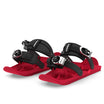
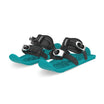












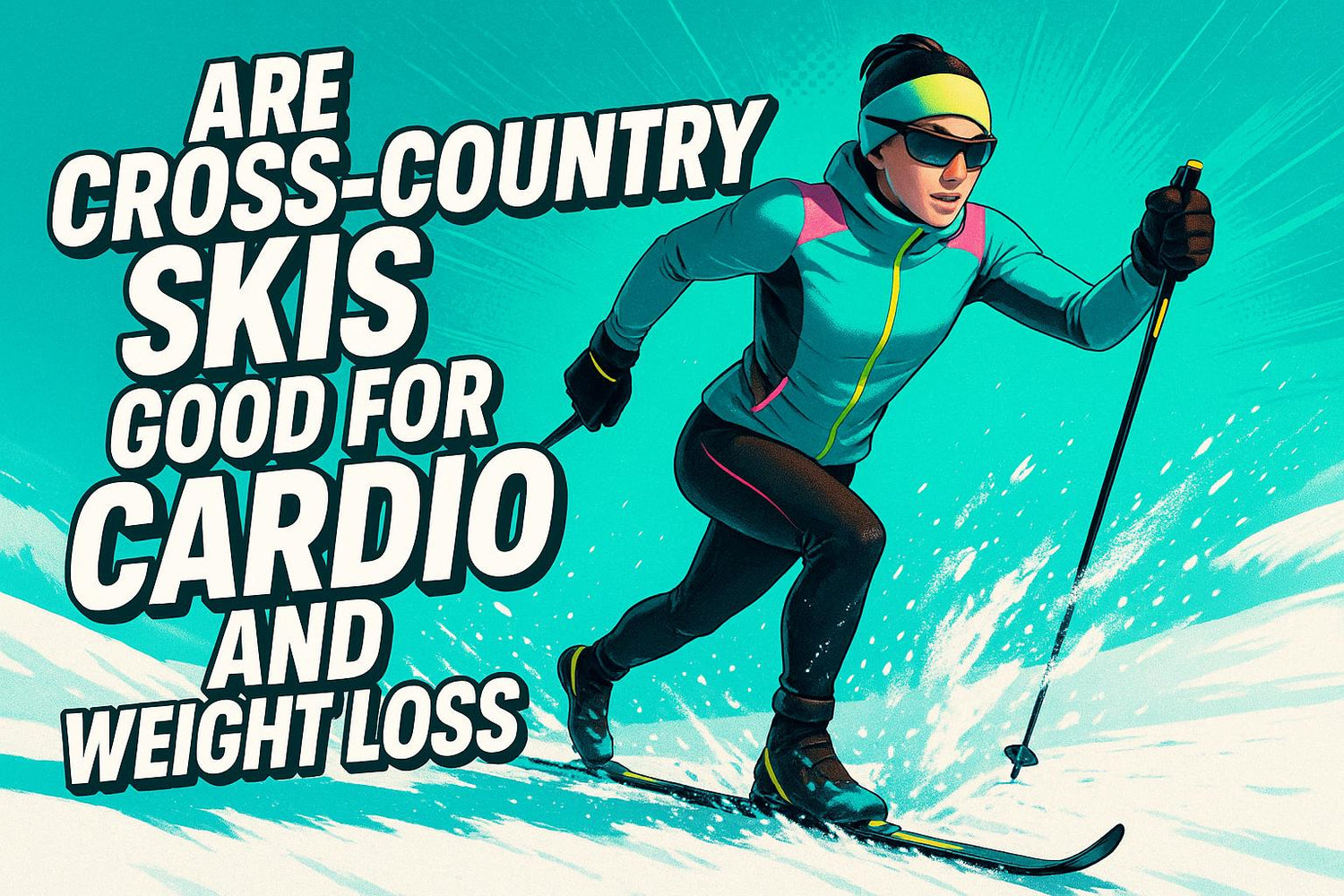
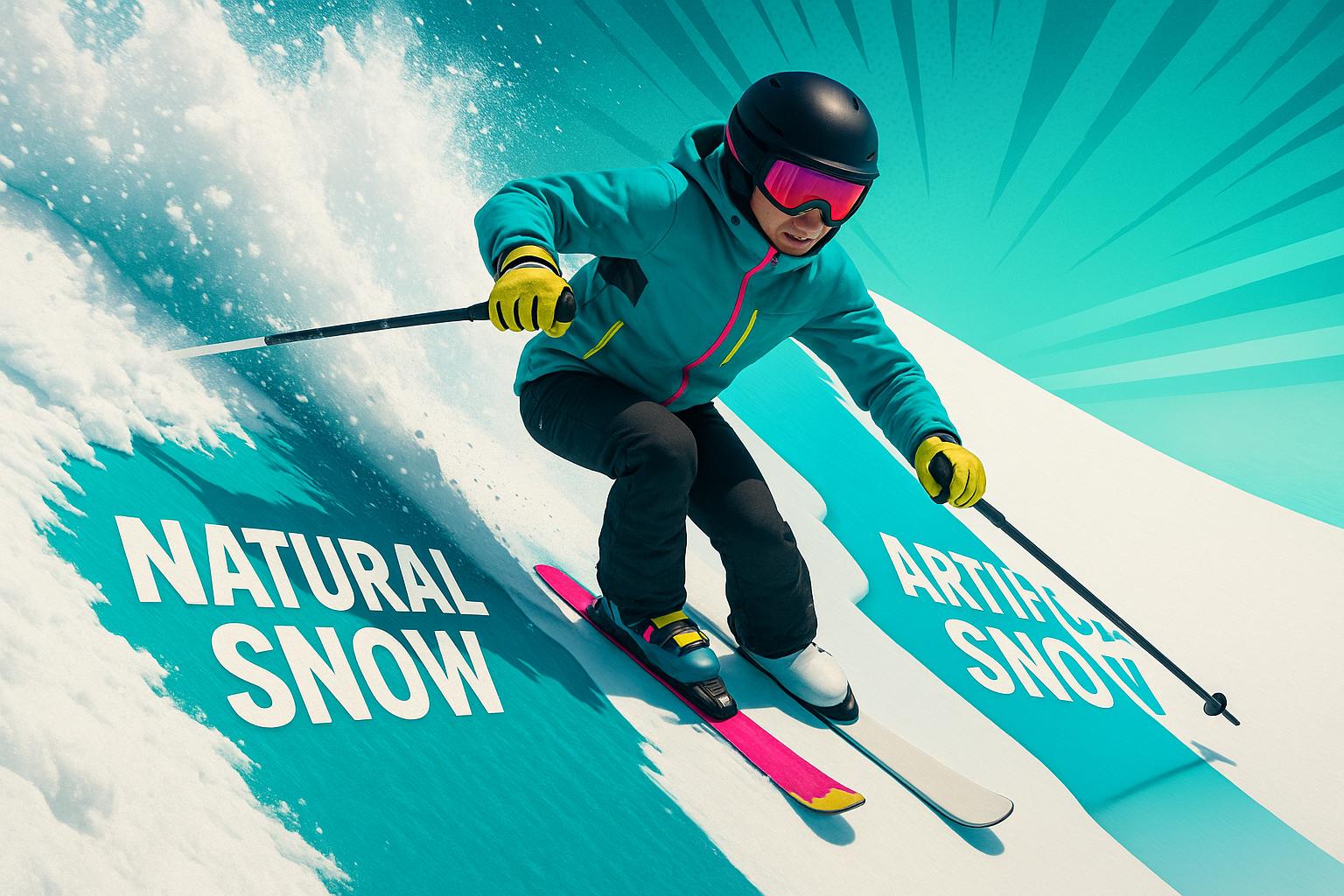





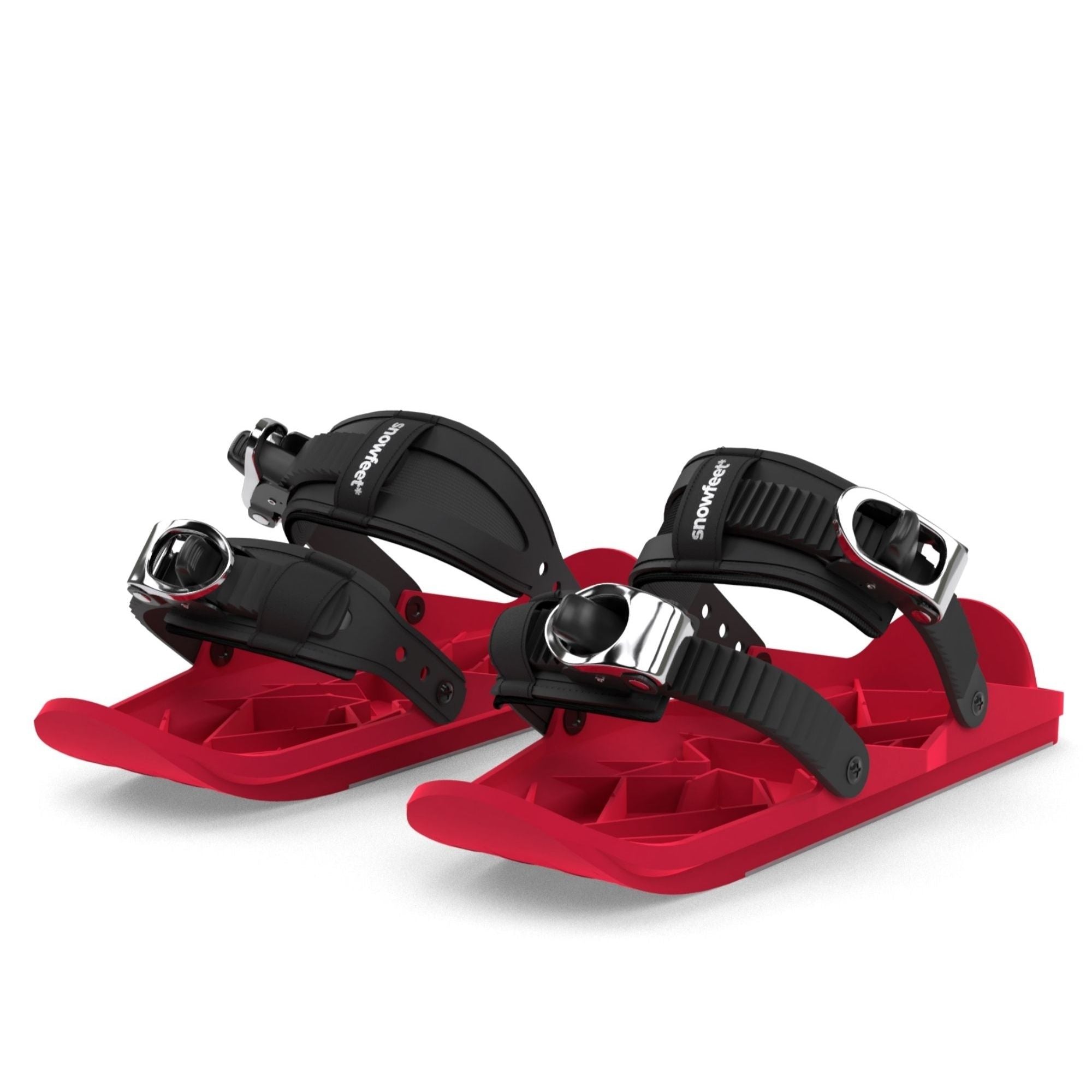
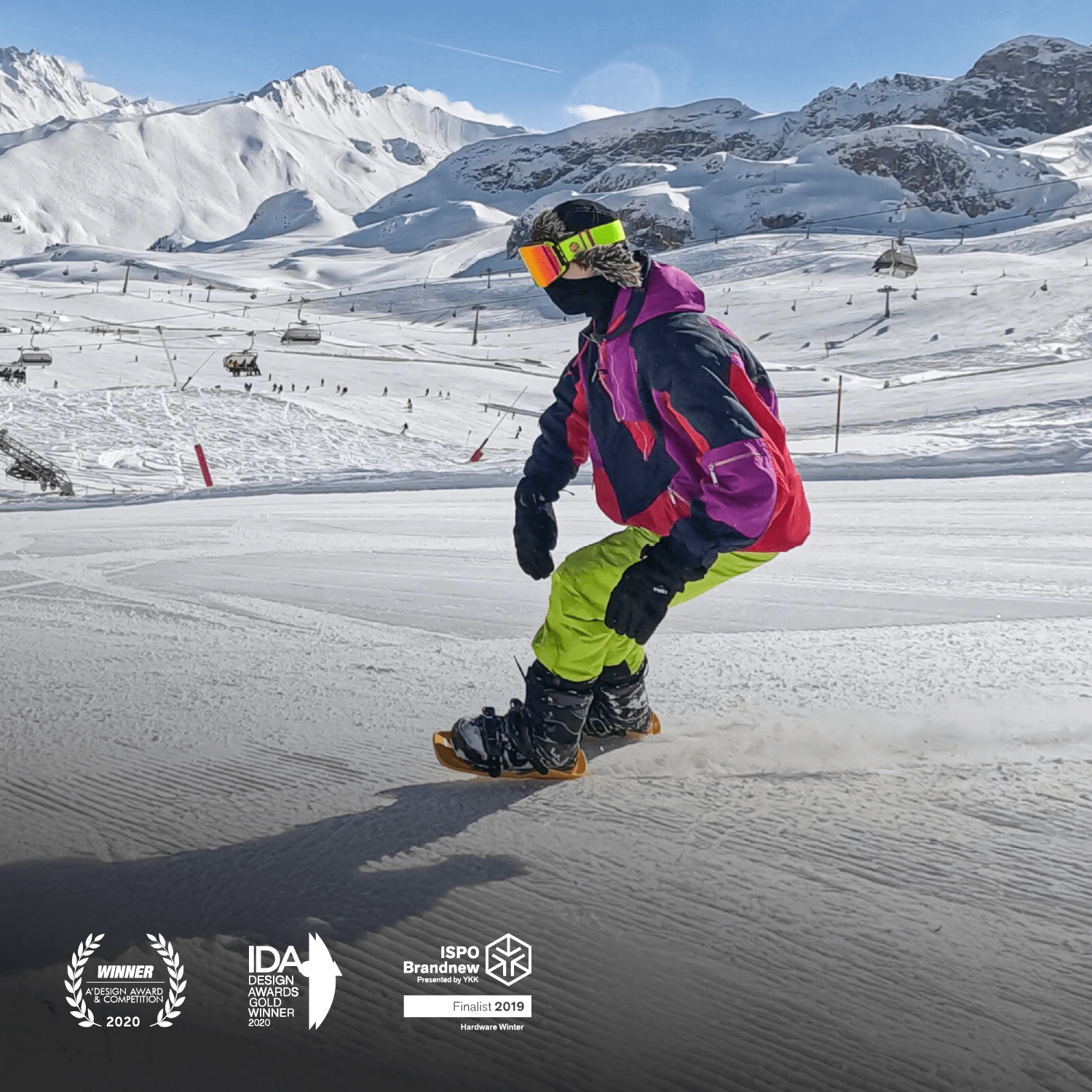




Zanechte komentář
Tento web je chráněn službou hCaptcha a vztahují se na něj Zásady ochrany osobních údajů a Podmínky služby společnosti hCaptcha.